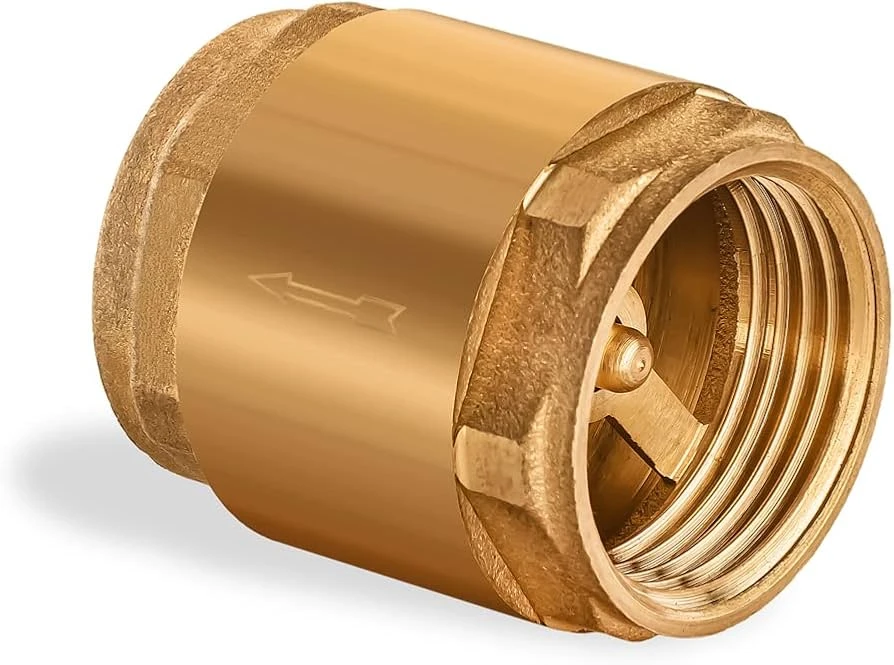A Brass Check Valve ASTM F2389 used in windmill systems is a critical component designed to manage the flow of fluids within the windmill’s hydraulic or water systems. Check valves ensure that fluids flow in only one direction. Preventing backflow that could damage the system or reduce its efficiency. Here’s a detailed overview of brass check valves in the context of windmill systems:
1. Role of a Check Valve in Windmills
- Preventing Backflow: In windmills, especially those with hydraulic systems or water pumps, check valves prevent the reverse flow of fluids. This is crucial for maintaining system integrity and ensuring that fluids, such as water, do not flow backward into the system.
- Protecting Equipment: By stopping backflow, check valves protect sensitive components of the windmill, such as pumps and hydraulic cylinders, from potential damage caused by fluid reversal.
- Maintaining Efficiency: Check valves help maintain the efficiency of the windmill’s operations by ensuring that fluids move in the correct direction. Optimizing performance, and preventing potential issues related to backflow.
2. Features of Brass Check Valves
- Brass Construction: Brass is chosen for its durability, corrosion resistance, and strength. In the harsh outdoor environment where windmills operate. Brass check valves provide reliable performance and withstand exposure to weather and various fluids.Durable and Reliable: Brass check valves are built to endure the mechanical stresses and environmental conditions typical of windmill operations. They offer long-lasting performance and reliability.
- One-Way Flow Design: The check valve allows fluid to flow in one direction only. Utilizing a disc or ball mechanism that prevents reverse flow. This design ensures proper system function and prevents contamination or damage.
- Size and Compatibility: Available in various sizes to match different system requirements. The valve must be compatible with the specific piping or hydraulic connections used in the windmill.
3. Applications in Windmills
- Hydraulic Systems: Windmills with hydraulic systems use brass check valves to ensure that hydraulic fluid flows correctly within the system, such as in the hydraulic lifts or actuators used to adjust the windmill blades.
- Water Pumping Systems: In windmills used for water pumping. Check valves prevent the backflow of water into the pump or the windmill’s water source. Ensuring efficient and reliable water delivery.
- Cooling Systems: Some windmills use cooling systems that require check valves to prevent fluid backflow and maintain proper operation of cooling circuits.

4. Maintenance and Care
- Regular maintenance helps ensure that the valve functions correctly and prevents system issues.
- Ensure the valve is clean and free from obstructions.
Conclusion
In windmill systems, a Brass Check Valve plays a vital role in maintaining fluid flow direction, protecting equipment from backflow. And ensuring operational efficiency. Its durable brass construction offers reliability and resistance to environmental factors. Making it suitable for the demanding conditions of windmill operations. Regular maintenance and inspection of brass check valves are essential to ensure their continued performance. And the overall effectiveness of the windmill’s hydraulic or water systems.

















